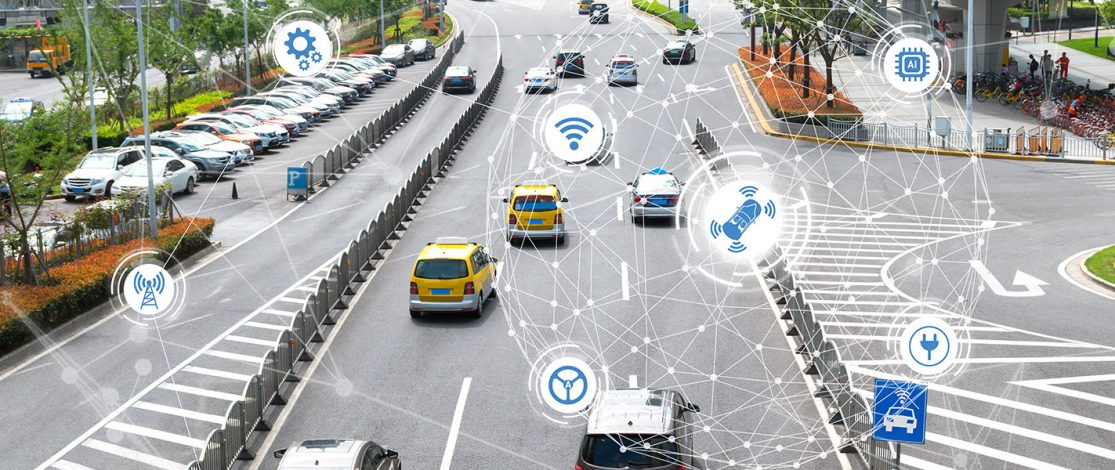Mobility is undergoing three transformations: environmental, with the challenge of carbon-free transportation; digital, with the development of autonomous driving and vehicle connectivity; and economic, with the emergence of new business models. Our expertise in critical digital systems enables us to develop safe, secure, sustainable, connected, standalone, and accessible solutions.

CEA-List research addresses all modes of transportation—road, rail, sea, air, and even people-powered modes like walking and cycling. Our ambition is to help make mobility safer, more environmentally friendly, and increasingly flexible, automated, and connected.
We address all aspects of vehicle environmental perception systems—sensors and algorithms, trajectory planning, decision-making, control—for ADAS (advanced driver-assistance system) development.
We are currently developing smart sensors and high-performance computing architectures for embedded AI. Our software can implement low-level (multi-sensor) and high-level (decision-making) data fusion strategies. This will position us to provide trusted environmental perception systems for implementation both inside and outside the vehicle. These systems will either be on board the actual vehicle or integrated into road infrastructure (traffic lights, fixed cameras, etc.).
We develop “trusted” networks tailored specifically to the reliability and security requirements of autonomous and connected vehicles. Through their quality of service and deterministic functions, these networks offer delivery guarantees suited to real-time critical applications. Our architectures are also designed to guarantee data security and confidentiality.
Growing demand for connectivity and automation and the development of new business models increasingly require embedded software with security features that must be verified and guaranteed. CEA-List is developing methodologies and tools to audit the security of systems and identify even the most discrete vulnerabilities. These solutions are designed to protect against malware and the most aggressive physical attacks.
Over the last few decades, the amount of on-board electronics in vehicles has increased considerably. And as artificial intelligence makes inroads into advanced driver assistance systems, the problem will only get worse. CEA-List is committed to developing more integrated and simpler electrical and electronic (E/E) architectures to reduce the weight of on-board components and the overall environmental impact of the vehicle.
To strike a balance between performance targets and environmental requirements, our researchers develop complex mixed criticality systems designed to share computing resources in a way that optimizes the vehicle’s available computing capacity for the tasks that need to be completed. These flexible systems are also designed to make upgrades easier throughout the product’s life cycle.
Our teams are developing a variety of technologies to help reduce a product’s environmental impact. Some address manufacturing, while others target the product’s useful life. Other technologies, such as non-destructive testing and digital inspection, enable predictive maintenance to increase the sustainability of mobility solutions and reduce their development costs.
Monitoring a product over its lifetime requires integrated structural health monitoring sensors. These sensors can monitor operational data (temperature, pressure, and/or force) or data indicating damage (corrosion, delamination, and/or impact). Algorithms (sometimes AI-based) and models can be used to diagnose the health of the structure.
We use eco-innovation methodologies to design sustainable mobility solutions. These methodologies consider the entire life cycle of a vehicle and its components—design, production, use, and recycling. Our tools and methodologies are developed specifically with eco-design and product traceability in mind. We are also working on implementing product passports and digital twins for regulations, processes, and products.
Learn more about our Augmented Digital Engineering research program
Monitoring the behavior of a driver and/or passengers, regardless of the mode of transportation, is a crucial tool for identifying critical situations requiring action (vehicle safety, human intervention, etc.). The physical and mental state of individuals in a vehicle provide essential input for the smart mobility systems of tomorrow. Our researchers use these variables to improve systems and limit failures, especially those caused by the human factor. This helps build a higher level of trust in autonomous vehicle systems.
CEA-List develops multisensory guidance and geolocation solutions for urban spaces and transportation infrastructure. They are used to create new mobility solutions that are accessible to all and consider the needs of the most vulnerable users. We design these solutions using people-centric methodologies.
Today’s vehicles are increasingly packed with services that generate frequent exchanges of information between humans, other mobility systems (cars, trains, bicycles, buses, planes, etc.), and the external environment. To ensure that users remain central to the mobility solution, we focus on providing intuitive and effective human-machine interfaces for these systems.
Seamless, sustainable multimodal mobility requires safe, secure, and reliable digital platforms. They are key to providing real-time control over the flow of people and goods, enabling better planning and vehicle sharing. Our industrial R&D partners in the transportation industry, particularly in logistics, are looking for tools like digital twins to optimize their processes and resources, perform simulations, and, of course, centralize information. CEA-List leverages its expertise in this field to adapt its digital platforms to the specific needs of the industry.
To provide efficient services, platform operators need tools that can analyze complex data, potentially in real time. CEA-List’s data analysis experts are developing artificial intelligence algorithms and decision support tools that can feed tomorrow’s digital twins and make predictions.